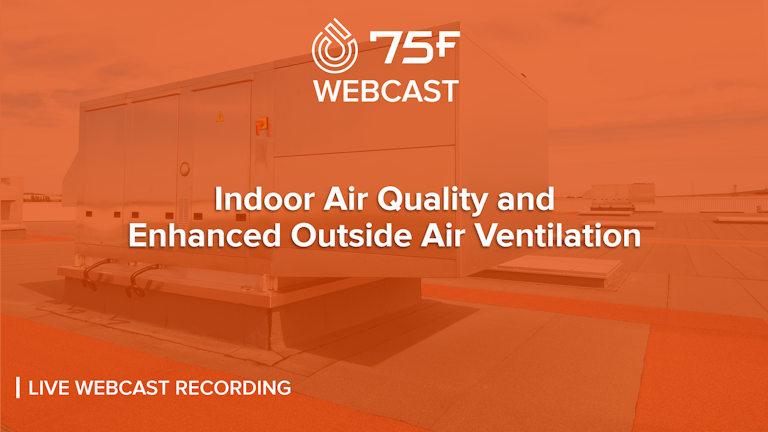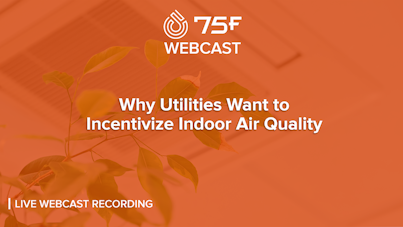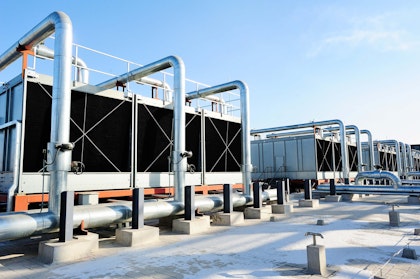
Healthier Buildings Series: IAQ & Enhanced OA Ventilation
Viewers took a deep dive into indoor air quality in this Healthier Buildings webcast, where hosts discussed the latest guidance from ASHRAE on increased outdoor air ventilation, IAQ in commercial buildings, and your air quality’s effect on your physical and cognitive health.
Webcast hosts were 75F's Chief Evangelist, Bob French, and Steve Lane, Communications Manager at Armstrong Fluid Technology. For a PDF of our slides, click here. Continue reading for an overview of webcast content.
Update: ASHRAE Guidance on Outside Air Ventilation
Since the early days of the COVID-19 pandemic, the American Society of Heating, Refrigerating, and Air-conditioning Engineers (ASHRAE) has been recommending commercial buildings increase outdoor air ventilation to mitigate the risk of COVID-19 transmission. ASHRAE is not the only one urging this — the same guidance comes from leading organizations around the world such as the Centers for Disease Control and Prevention (CDC) and REHVA, the European equivalent to ASHRAE.
Guidance from these organizations go so far as to recommend using 100 percent OA wherever possible. However, most HVAC equipment is not designed or sized to do this, leaving facility managers unsure how to follow guidelines.
75F's Epidemic Mode control sequence takes this concern into account by automating increased OA ventilation guidelines without pushing equipment beyond capacity. The sequence constantly measures indoor space temperature and humidity, and then brings in as much outside air as is practical given the limitations of the weather, the load, the size of the equipment.
To address the same issue, ASHRAE recently updated their guidance with specific directions for increasing OA ventilation to the extent possible:
If the space temperatures are satisfied and the relative humidity is less than 55 percent, OPEN the OAD [CLOSE the RAD] 3 percent every 15 minutes.
If the space temperatures are exceeded by 1 degree F, OR the relative humidity is greater than 60 percent, CLOSE the OAD [OPEN the RAD] 6 percent every 5 minutes.
IAQ in the Commercial Environment
Even before the global pandemic, the average person spent about 90 percent of their day indoors. As people around the world are spending more time at home — or splitting their time evenly between work and home — IAQ is more important than ever, and not just because of COVID-19 transmission, Lane pointed out.
Poor air quality can lead to both short- and long-term health issues, including dizziness, headaches, visual disorders, and even damage to the kidney, liver, blood stream and central nervous system. When formaldehyde is involved, poor IAQ may also cause cancer.

Furthermore, long-established data demonstrates that IAQ and cognitive ability are correlated.
Lane referenced a study published in the T.H. Chan Harvard School of Public Health in which study participants were exposed to various levels of CO₂ and volatile organic compounds (VOCs), and then administered cognitive tests to see if IAQ influenced scores. In the end, participants tested in spaces with higher ventilation rates, lower levels of chemicals, and lower CO₂ scored significantly better.
Obvious contributors to poor IAQ include mold, but Lane explained that items commonly found in the office environment — photocopiers, carpeting, white board markers, to name a few — can also be a source of low air quality. In this webcast, Lane suggests keeping your systems running regularly and efficiently, and offers viewers practical services from Armstrong that can help keep your systems balanced.











